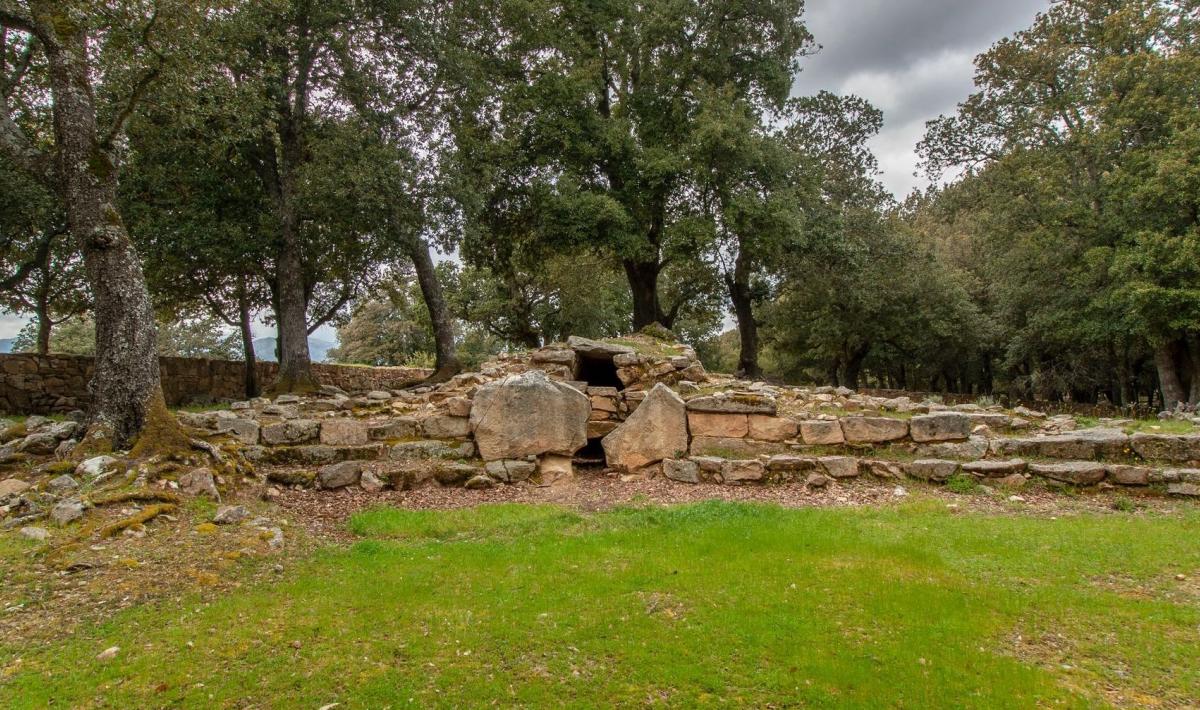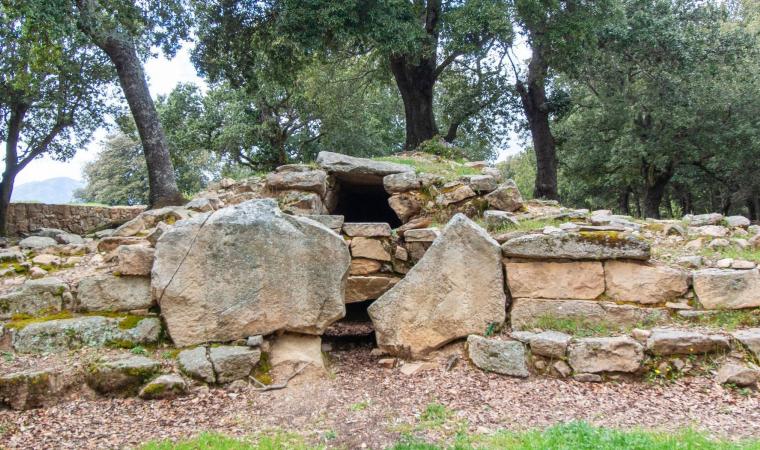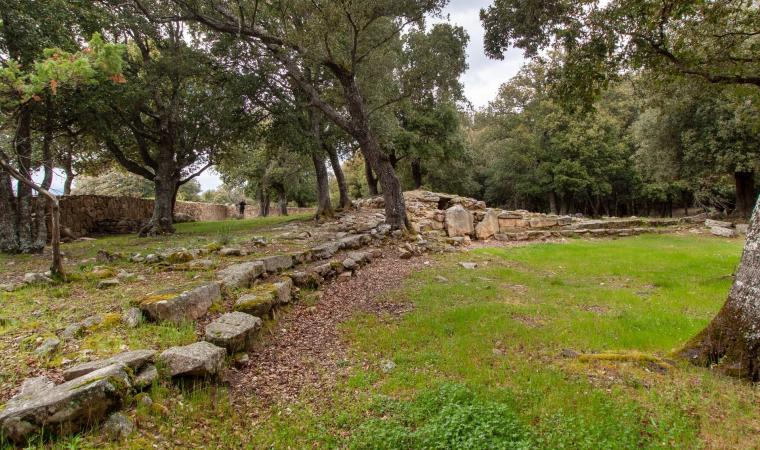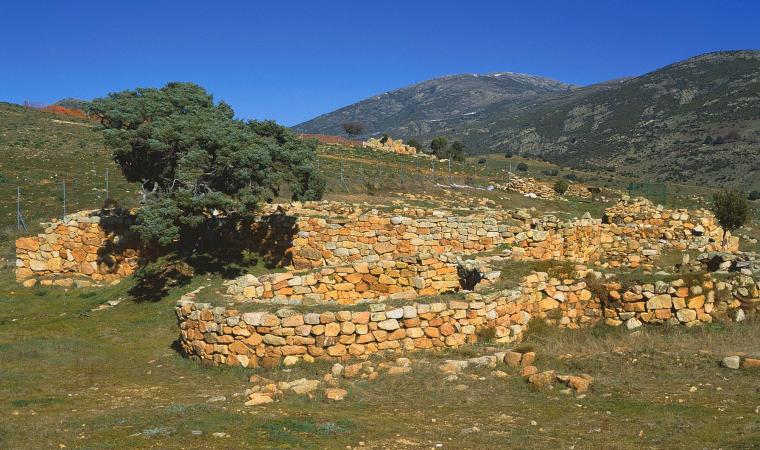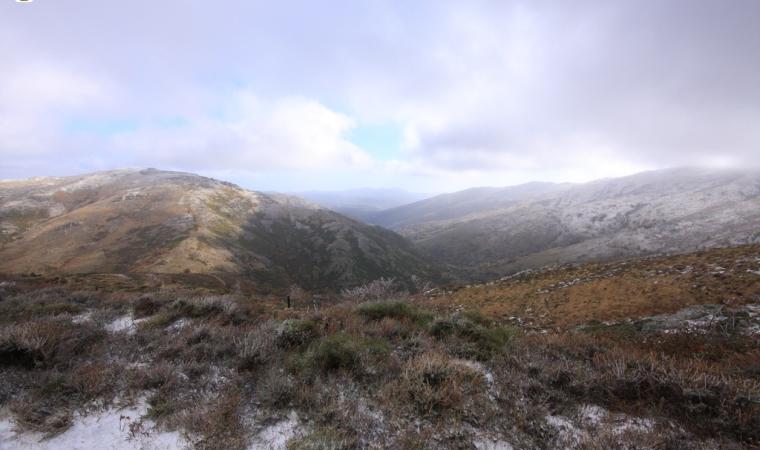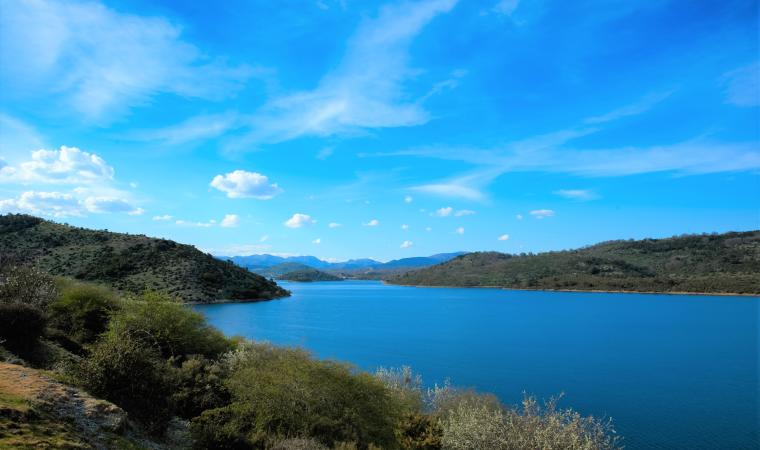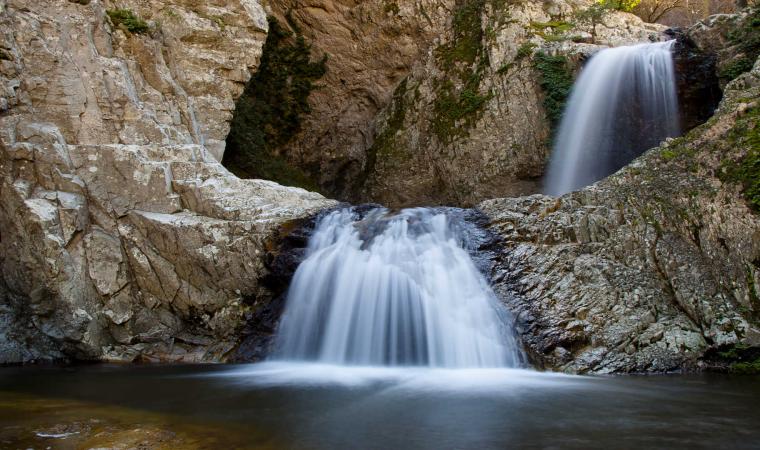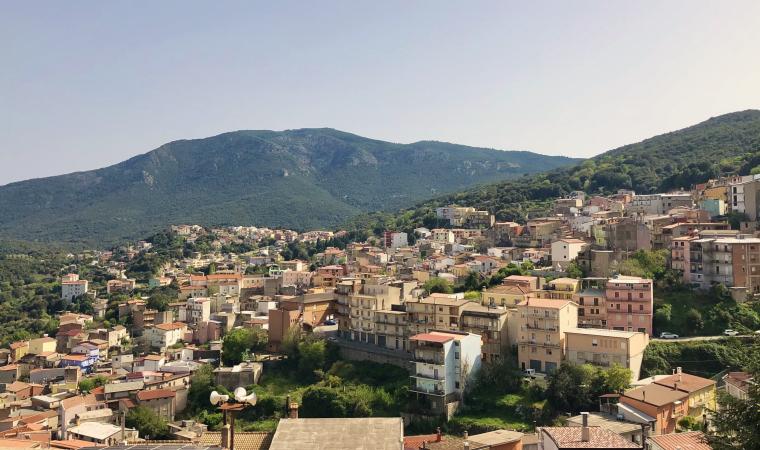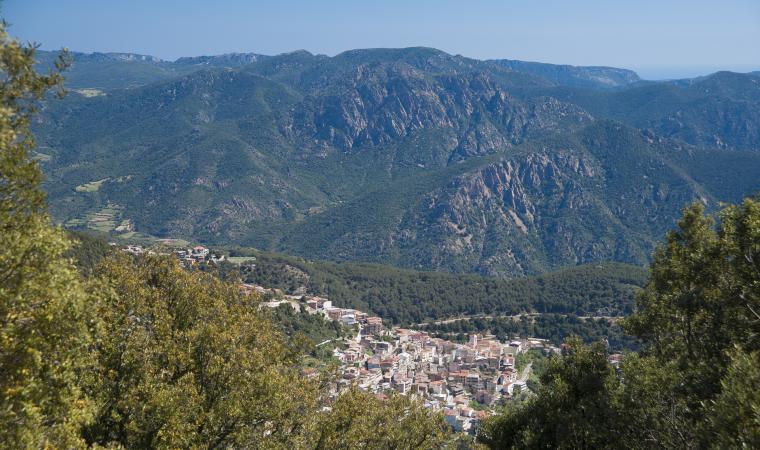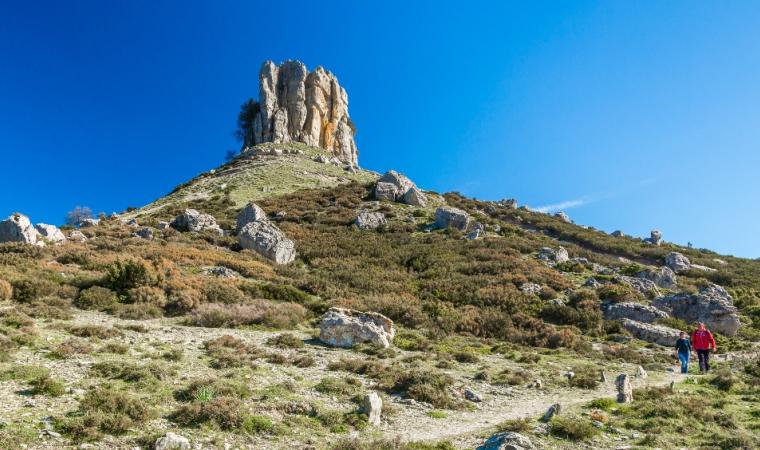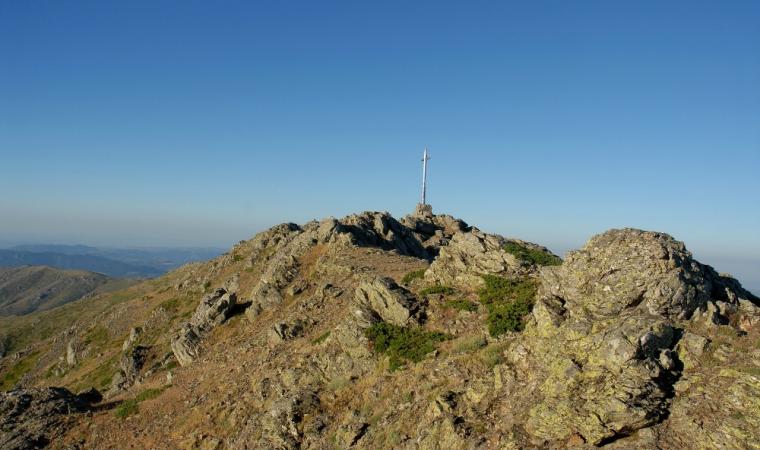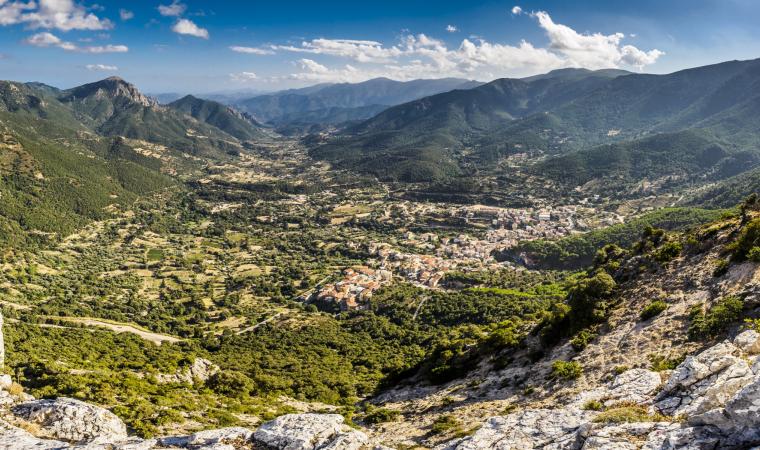A mysterious, mystical, almost surreal atmosphere surrounds Sa Carcaredda, an archaeological complex hidden in the middle of a holm oak forest, on the border between Ogliastra and Barbagia, in the territory of Villagrande Strisaili, not far from the shores of the lake in Alto Flumendosa. In the site, frequented since time immemorial, there are the ruins of the monuments and traces of the daily life of the Nuragic peoples who lived here during the Bronze and Iron Ages. The evidence they provide are a temple in antis, a large village and four Giants’ Tombs, and they have a distinctive trait, seemingly appearing to be without nuraghe or nuraghi of reference. The dimensions of the religious building and the tombs, along with the large number of votive artefacts found in the area - probably used as a storeroom - show the importance of the settlement, both from a religious and a commercial point of view and, in general, the complexity of the Nuragic world in Ogliastra.
The temple, made from uneven blocks of granite and porphyry, is divided into a circular room preceded by a quadrangular vestibule. Inside, you will notice some original elements: a bench-seat for the worshippers and ministrants and granite slabs as flooring. The ‘heart’ of the building is the circular chamber, originally with a tholos ceiling (false vault). Here, a ceremonial hearth was delimited by a wall made of limestone blocks, externally decorated with ashlars imitating the bastions of Nuragic towers. The structure, now on display at the archaeological museum of Nuoro, served as an altar and contained the numerous votive artefacts, largely made of bronze, found during the excavation campaigns. Around the temple, you will see circular and rectangular traces of other spaces, perhaps relating to the village huts, which are still being investigated.
To visit the two best preserved Giants’ Tombs, you will walk among the holm oaks. The formidable stele of the first one lies fragmented on the ground near the tomb, which has a burial chamber twelve meters long and is still intact, made of granite blocks, above which there are flat slabs positioned as a flat arch. The second tomb is about 300 metres away and has an exedra with orthostates attached to the ground.
Continuing the Nuragic tour, moving in a northwesterly direction you will find further fascinating evidence of ancient sacredness: the village-sanctuary of s’Arcu e is Forros, with a three-lobed nuraghe and three temples dedicated to the worship of the waters. Next to one of them, which is of the megaron type, you can admire two circular structures, considered to be ovens. The itinerary of the Nuragic areas of worship ends to the north of Lake Flumendosa with the Giants’ Tomb of Troculu, with its tomb body still intact.

